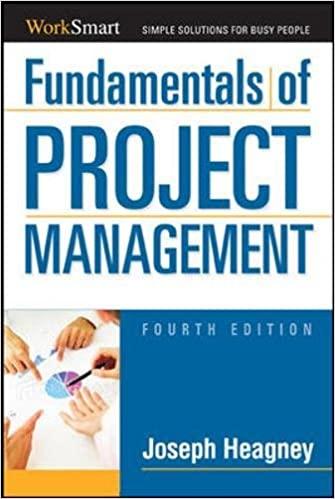Question
Q1) Suppose a retail store can sell 300 boxes of instant noodles per month, and this demand is constant over time. The retail store incurs
Q1) Suppose a retail store can sell 300 boxes of instant noodles per month, and this demand is constant over time. The retail store incurs a fixed order cost of $1,000 each time an order is placed. Each box of instant noodles costs the retail store $100, and the annual holding cost rate is 20%. How many boxes of instant noodles should the retail store order in each replenishment lot? How long is the reorder interval? How many orders should be placed per year?
2. Suppose that a cellphone manufacturer sells its cellphone to supply the U.S. market, which is served from a warehouse located in St. Louis. Daily demand at the St. Louis warehouse is normally distributed, with a mean of 1,000 and a standard deviation of 500. The ordering lead time is 4 days and shipping costs $1 per unit. Each cellphone costs $100, and the warehouse incurs an annual holding cost rate of 10%.
(a) The warehouse follows a continuous review policy to manage inventory and aims for a cycle service level (CSL) of 98%. Given the minimum lot sizes, the warehouse would order 7,000 cell phones each time (on average, once every week). What is the safety stock that satisfies the required CSL? What is the expected annual safety stock holding cost and annual cycle stock holding cost?
(b) Suppose that the warehouse changes its replenishment policy from a continuous review to a periodic review, and the review period is 5 days. What is the order-up-to level that achieves a CSL of 98%?
3. Dans Bookstore and a publisher have decided to sign a revenue-sharing contract for a new book. Each book costs the publisher $5 to print. The book will be sold to Dans Bookstore for $8 per unit. Dans Bookstore in turn prices the book at $20 and forecasts demand to be normally distributed, with a mean of 10,000 and a standard deviation of 4,000. Dans Bookstore will share 30% of the revenue with the publisher, keeping 70% for itself. There is a single selling period for the book, and the bookstore only places one order at the beginning of selling period. Any unsold books at the end of the selling period are discounted to $4, and all can be sold at this price. Money made from discounted books is kept by the bookstore.
(a) How many books should the bookstore order?
(b) At the optimal order quantity, how many books does the bookstore expect to sell at a discount?
(c) What is the profit that the publisher expects to make? (Note that the publishers profit includes the profit obtained from the books that the bookstore orders from them, plus the income obtained from the revenue that the bookstore shares with them.)
Step by Step Solution
There are 3 Steps involved in it
Step: 1

Get Instant Access to Expert-Tailored Solutions
See step-by-step solutions with expert insights and AI powered tools for academic success
Step: 2

Step: 3

Ace Your Homework with AI
Get the answers you need in no time with our AI-driven, step-by-step assistance
Get Started


